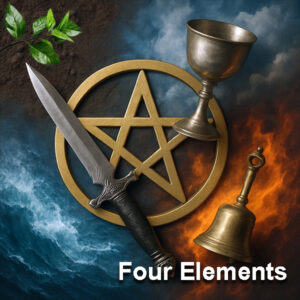 How often have you heard the four elements, Earth, Air, Fire, and Water, referenced alongside witchcraft? Probably countless times. Across history, nearly every culture named these as the core elements. The ancient Sumerians were the first to really give them focused attention.
How often have you heard the four elements, Earth, Air, Fire, and Water, referenced alongside witchcraft? Probably countless times. Across history, nearly every culture named these as the core elements. The ancient Sumerians were the first to really give them focused attention.
Everything on Earth—and in the cosmos—has its own vibration. Every stone, tree, and being hums with infinite frequencies. Additionally, like-vibrations resonate and build collective consciousness. That’s not just poetic—it’s metaphysical physics.
I’ll get into how witches harness the elements soon, but come on—you know me. We’re doing history first.
We have hundreds of occult books on our website and in our metaphysical shop, come visit! Connect with us for more on Instagram, Facebook (Meta) or TikTok.
The Four Elements: Ancient Influences
Let’s be honest—Sumerian mythology didn’t exactly hand us a tidy four-element diagram. However, elemental forces still shaped their cosmic worldview. For example, the Enuma Elish tells of a universe born from a chaotic sea. So yes, water took center stage early, even if fire, earth, and air lagged behind.
– The Enuma Elish (Akkadian Cuneiform: 𒂊𒉡𒈠𒂊𒇺), often translated as “When on High,” is a Babylonian creation myth from the late second millennium BCE. Named after its opening line, it remains the only fully intact account of ancient Near Eastern cosmology.
Later thinkers, however, got more system-oriented. The ancient Greeks took these chaotic forces and said, “Let’s categorize.” Thus, fire, water, air, and earth became the standard model for explaining… well, everything. Feeling irritable? Too much fire. Can’t make a decision? Clearly an air imbalance.
Eventually, Hermeticism appeared and gave the four elements a spiritual upgrade. This tradition, pieced together from Egyptian mystery schools and Greek philosophy, absolutely adored symbolic frameworks. Hermes Trismegistus—yes, that Hermes—gets credit for highlighting the spiritual value of these elemental forces. The Hermetic Principles play a huge role in witchcraft, the four elements are naturally incorporated in them too.
Naturally, Hermetic thinkers didn’t stop there. They expanded the idea into alchemy, Kabbalah, and nearly every form of Western occultism. Because obviously, the elements are too convenient not to use for explaining soul paths, planetary magic, or Tuesday’s mood swings.
In short, the Sumerians didn’t invent elemental diagrams, but they absolutely sparked the concept. Later cultures just added drama, symbols, and fire—lots of fire.
Gnomes, Sylphs, Salamanders, Undines
I deeply respect Hermeticism—don’t get me wrong. But I suspect humanity knew about these elemental forces long before Hermes branded them. Still, Hermes Trismegistus did frame them with far more spiritual depth and philosophical flair.
In many magical traditions, especially Western occultism, people often refer to the four elements using mythic entities. So yes, you’ll see Gnomes (Earth), Sylphs (Air), Salamanders (Fire), and Undines (Water) pop up. Eventually, you’ll run into them in spell books or rituals—and probably ask, “What the heck is a Sylph?”
While the concepts are ancient, are these specific elemental beings? Not so much. Paracelsus, a 16th-century Swiss physician and alchemist, made them trendy. He didn’t invent them—but wow, did he run with the idea.
His Book on Gnomes, Sylphs, Salamanders and Undines didn’t just introduce elemental spirits—it basically became the textbook. Thanks, Paracelsus. Seriously.
 The Four Elements in Witchcraft
The Four Elements in Witchcraft
So, Earth, Air, Fire, and Water aren’t just poetic—they’re essential. You literally can’t live without all four. Consider this: you’re made of minerals (Earth), you breathe air (obviously), you burn energy (Fire), and you’re mostly water (hello, 70% hydration).
Some practitioners also refer to a Fifth Element—not the movie. It’s Aether, or Spirit, and it ties everything together. It’s also referred to as “The Will” or “To Go”. So now, congratulations—you’ve got a metaphysical explanation for the five points of the pentagram.
In witchcraft, the elements move beyond biology. They shape your practice, your energy, your intention. That’s where the real magic begins. Here is a super-simple breakdown of elemental correspondences.
- Earth: Often associated with grounding, stability, practicality, and the physical world. It also corresponds with money, prosperity, fertility and growth among other things. Earth “rules” over jobs, employment and everything else listed here in the Tarot.
- Air: Represents communication, intellect and reasoning. It also corresponds with ideas, philosophies, justice and legal matters among other things. Air “rules” over intellectual struggles, and the conflict that arises from these things and our own truths in the Tarot.
- Fire: Symbolizes energy, passion, transformation, and the ability to ignite change. It also corresponds with inspiration, creativity, war, lust and passion among other things. Fire “rules” over careers and passions in the Tarot.
- Water: Linked to emotions, intuition, and the subconscious. It also corresponds with divine feminine energy, goddess, psychic talents and experience and dreams among other things. Water “rules” relationships of all kinds in Tarot.
When casting a spell, I often focus on one element more than the others and sometimes attempt a real equal balance of elements. A witchin’ tip from me; cascarilla (eggshell powder). Eggshell corresponds with all four elements and brings great strength to any spell.
 Calling Corners and Casting Circle
Calling Corners and Casting Circle
I will write an entire separate article on calling corners and casting circle soon but just want to explain the elements in this concept.
The corners are the four cardinal directions and people will argue about which element corresponds best with which direction. Widely accepted: Earth (North), Air (East), Fire (South) and Water (West).
In my own practice though, Fire and Air are switched, Fire is East and Air is South. My reason for this is that the East is associated with the rising of the sun, enlightenment. As the sun rises its fire warms the earth, flowers open and everything seems to just come alive. It just makes greater sense to me.
The idea is to open a portal one at a time in each cardinal direction and call upon the corresponding element to come take its place. This is to help guard the circle and lend that energy to the work. You could also say to witness the work too.
These corners, these four directions and corresponding elements are also referred to as Guardians, sometimes Watchtowers. For these energies (and sometimes entities) a witch can conjure simple elemental energy, or elementals, angels, dragons or other spirits.
 Four Elements on the Altar
Four Elements on the Altar
In most witchcraft traditions and cultures, there are witch tools on the altar placed in the cardinal directions that correspond with these elements. See my article about altar setup to learn more. I use a special stone ritual bowl and salt for the North (Earth), a cauldron for the East (Fire), a ritual bell for the South (Air) and a chalice for the West (Water).
In addition, while an altar has an altar candle, sometimes candles that correspond to the individual elements are also placed in those corners. I do that too sometimes; it depends on the work I am doing. Choose corresponding colors for each candle, and many will carve a symbol for that element on the candle. A step further is dressing each candle with corresponding herbs and oils.
We have a lot of herbs on our site, 1 oz packets, 2 oz packets and bulk 1 lb. herbs. We also have hundreds of essential oils, different brands and bulk oils too.
In closing, you can also meditate on each element, see how it might be out of balance, too much focus or perhaps neglect. This can help bring your life into a better, healthier balance. I suggest you start with this instant-alpha brainwave meditation.
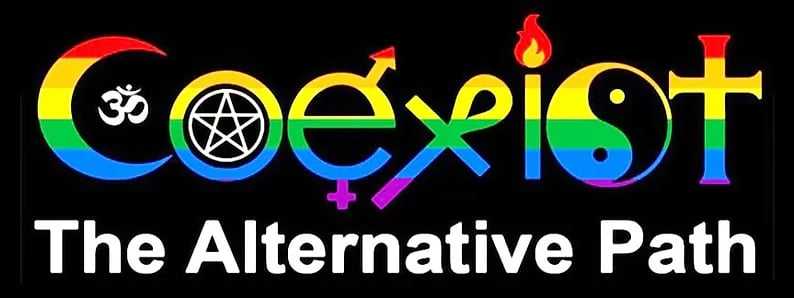
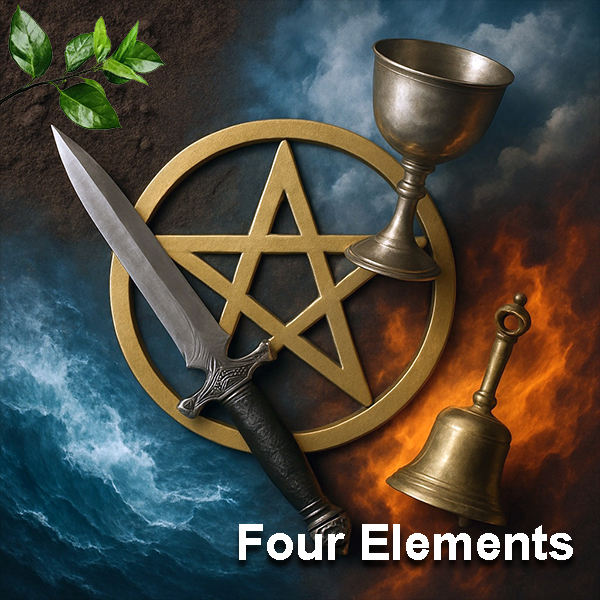
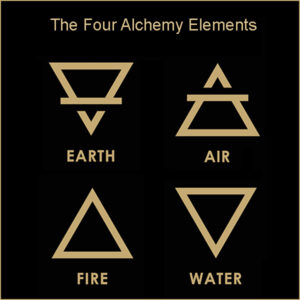 The Four Elements in Witchcraft
The Four Elements in Witchcraft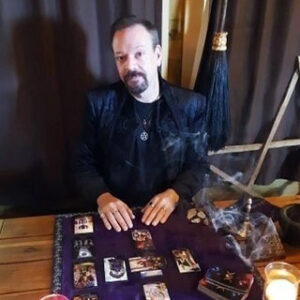 Calling Corners and Casting Circle
Calling Corners and Casting Circle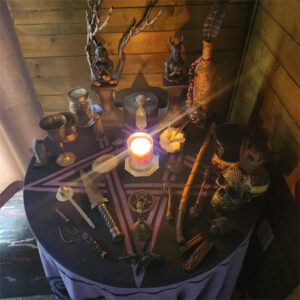 Four Elements on the Altar
Four Elements on the Altar



I am so glad to be able to delve into the useful and necessary tool of the Elements. In tarot, wands are fire, Is this because fire burns wood? Why does fire not correspond with swords, which is represented by air?
Thanks Greg!!
🙂 Good questions Luna 🙂 What does a wand do? It sends forth energy, it creates, it makes manifest – all properties of fire and so, an appropriate representation in the Tarot. Swords, mostly cut air, even in battle don’t they? And a sword is an ancient symbol of justice, of what’s worth fighting for, ideals that need defending, principles … all of these are thoughts, and truths, personal truths, or truths we sign up with. All of which are ruled by and correspond with air. Then those thoughts become words, we speak those truths and ideals, and inevitably invite conflict. And the same in reverse, other people’s truth comes knocking, they speak it, we’re offended and the struggle or battle ensues. Thus, swords are a perfect representation of air. 🙂 You’re thinking very physical; fire burns, wind blows. But you must think of the metaphysical and spiritual properties.
Is there a reason people may be drawn to a particular element over another? Could it have to do with your astrological big 3?
Hello Erika, 🙂 Yes, absolutely, and yes again – astrological makeup (thought that’s not the only reason someone may be drawn to one element over another). As an Aries, I’m naturally drawn to (and have a natural knack for) working with fire. You’ll also find the element that corresponds best with your zodiac sign tends to be your modus operandi – how you do things. 🙂 Blessings.
I have been asked if people should only focus on their element.. What special ritual should they do to be more in tuned with their own element?
Hello again Megan 🙂 Good question, and several answers. First, people will naturally gravitate towards things that correspond with their element, as with zodiac signs. Being an Aries, and living fire, I gravitate towards magic with fire, crystals that correspond with fire like carnelian etc. So, if one is naturally drawn to a thing, it’s most likely corresponding to their element. Second, learn what things correspond with your element, choose to work more with those things, but don’t neglect the other elements. What I wish people would realize, just because you are one of the four elements based on your astrological sign and profile, doesn’t mean you’re 100% that element. Again, as an Aries, I’m fire, but I am also earth, air and water. We are all of us all four elements, it’s just that one is dominant compared to the others.
A great book to help with this topic is Scott Cunningham’s Earth, Air, Fire and Water.
Lastly, study and understand the correspondences of the four elements, the physical, metaphysical and spiritual aspects. Perhaps even a little meditation with focus on those aspects and see how you display or exhibit those aspects. These things will help you be more in tune with your element. In magick and spells, I tend to lead with fire, but I include the other elements too. I find this brings a better balance and greater strength to my spells and rituals. 🙂 Blessings!
Early in this post it says that at times ancient Greeks categorized the elements to explain everything. Feeling irritable, too much fire, can’t make a decision, , air imbalance. When we are having these imbalances, what do we do to become more balanced? How do we attune ourselves to notice and embrace the elements in every day life?
🙂 “too much fire”, “air imbalance”, 🙂 Mary, that was me being sarcastic, but at the same time it can be viewed as true, like letting your creativities run away with you, causing irritation for neglecting other parts of life, or feeling irritated because you can’t fulfill those creativities (too much fire). Or, indecision, being unable to decide, perhaps because of what other people will think, (air imbalance). So, yes …. while I was just being sarcastic you can also lump behaviors, sort them into elements, and very similar to how Tarot Cards (the pips) group characteristics, behaviors and situations together. If you seek balance, simply be thoughtful or even meditate on what seems to be the most forceful or what has the biggest presence in your life at this time. Very interesting, I’ve often told people I use sarcasm at times to teach, well hell now, here we are. Thanks Mary!
I dont buy into the whole elemental beings thing in witchcraft. Like, come on, Gnomes and Sylphs? Sounds like something out of a fantasy novel. Lets stick to the real magic, people!
Elemental beings add depth and tradition to witchcraft. Embrace all forms of magic.
I know this might sound crazy, but what if the Four Elements in Witchcraft are actually just a cover-up for something even more mysterious and powerful? Like, what if theyre actually portals to alternate dimensions or something? Mind blown, right? 🤯
Interesting theory, but I think the Four Elements are more symbolic than portals to other dimensions.